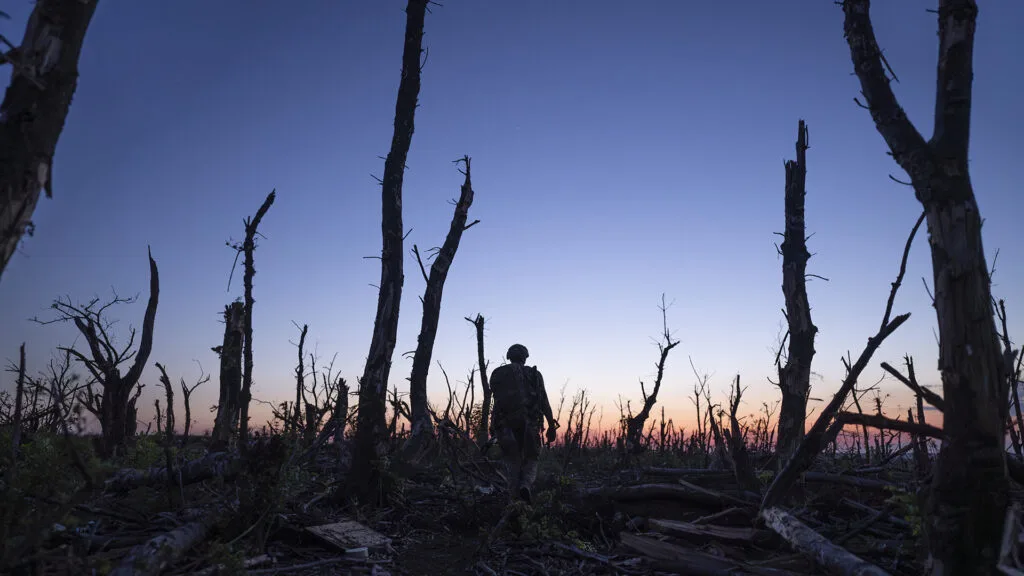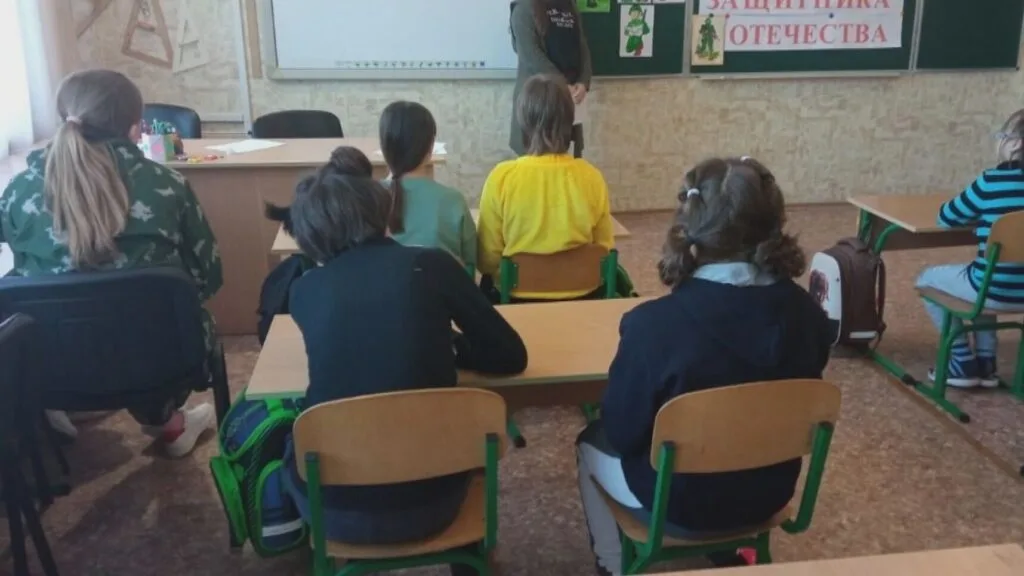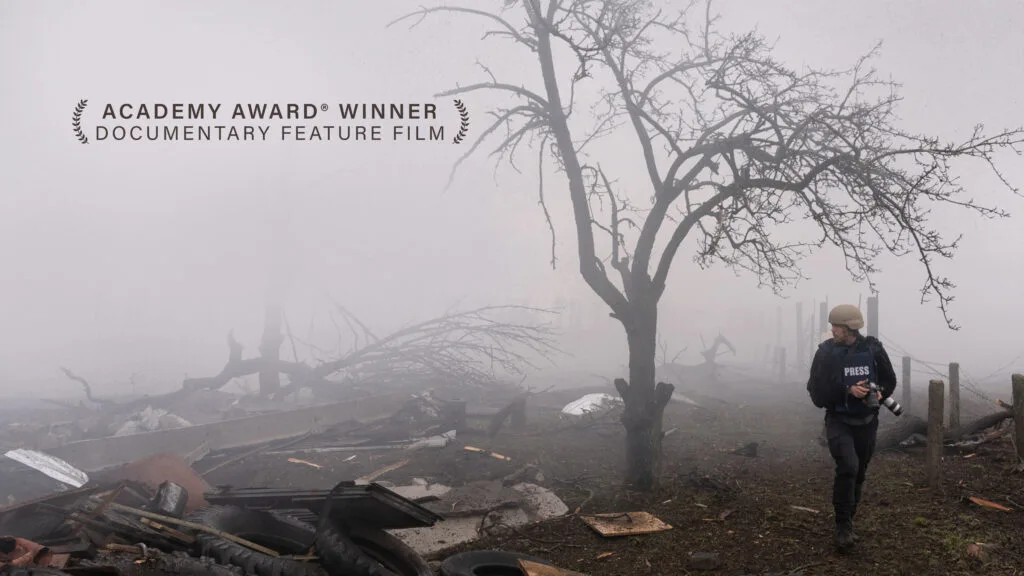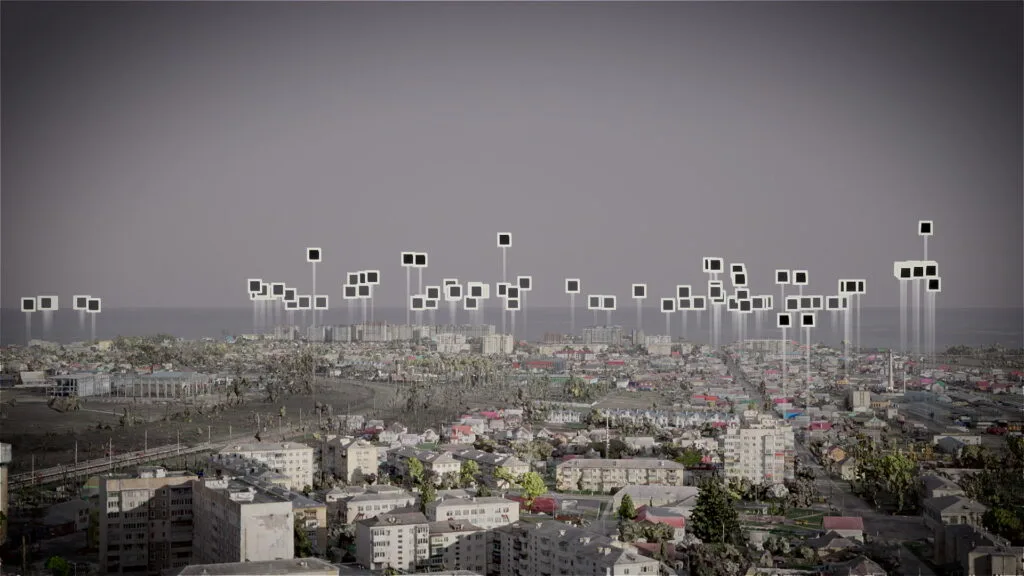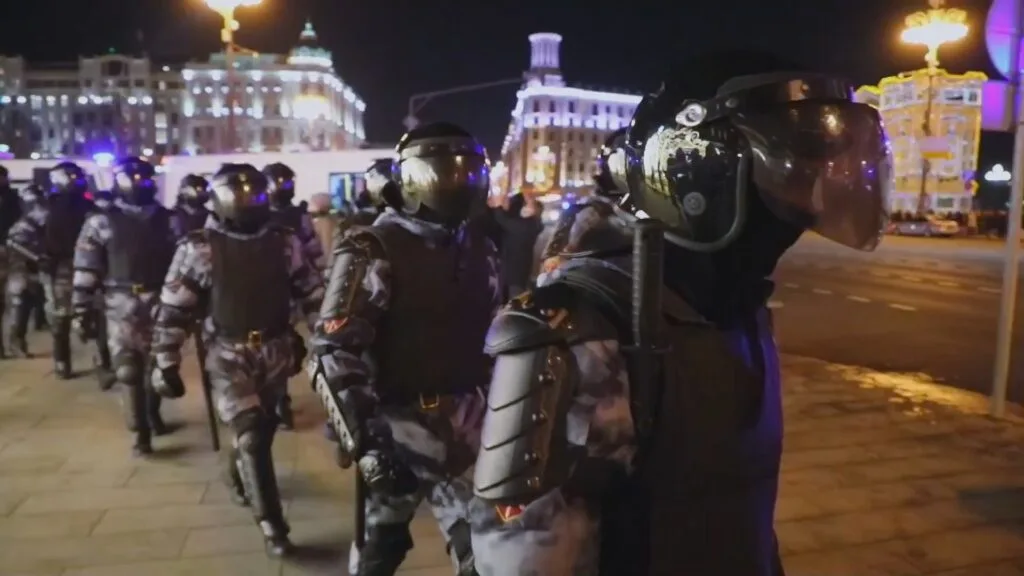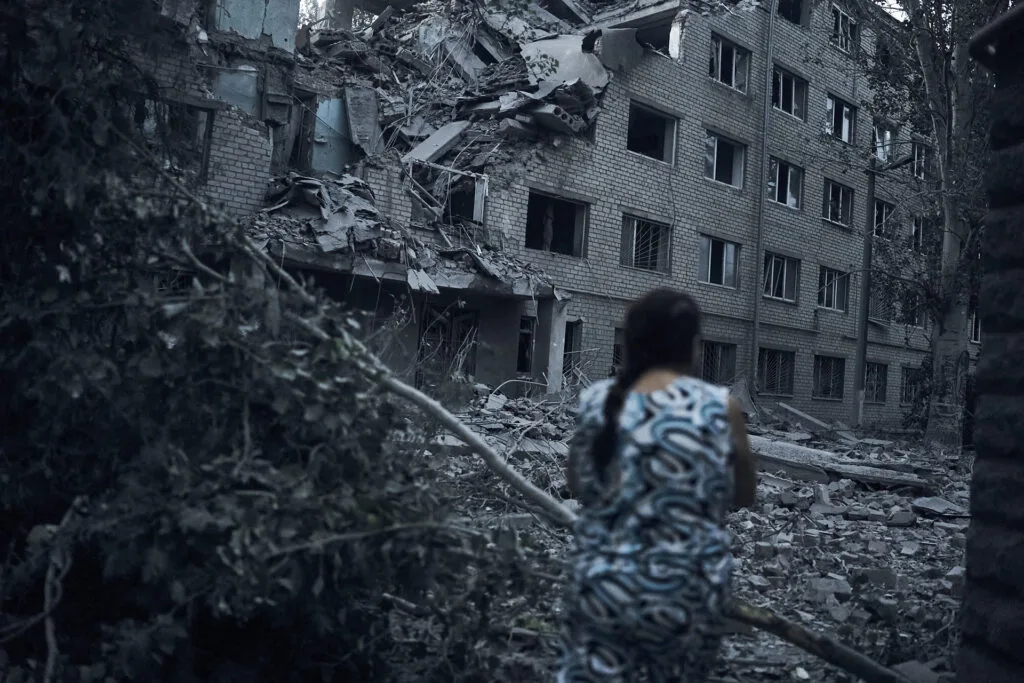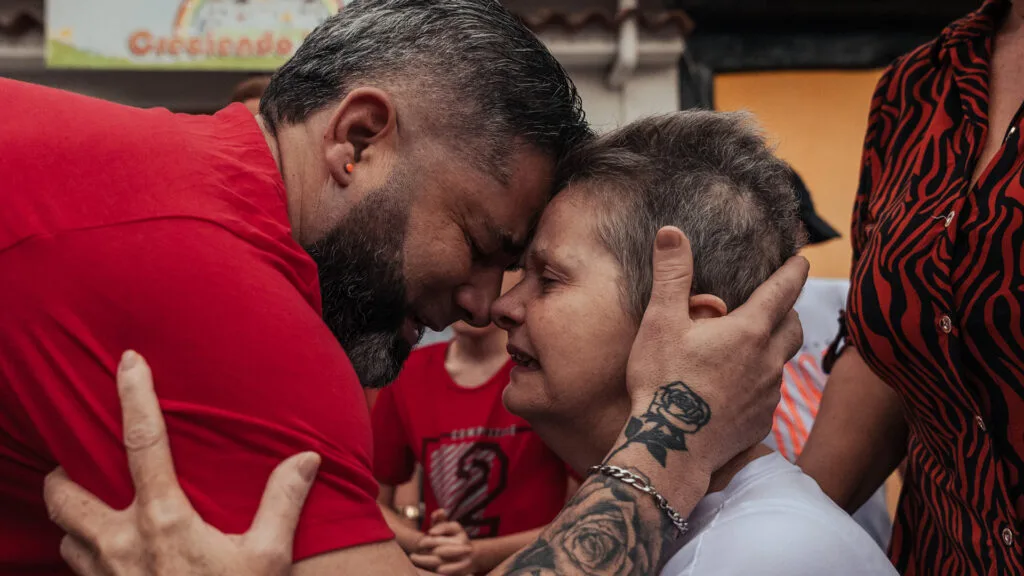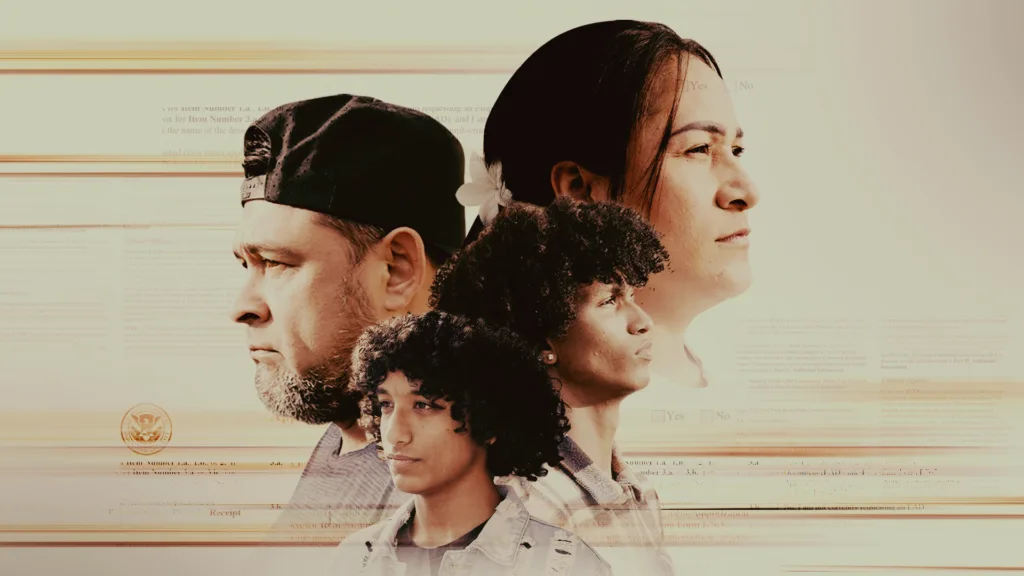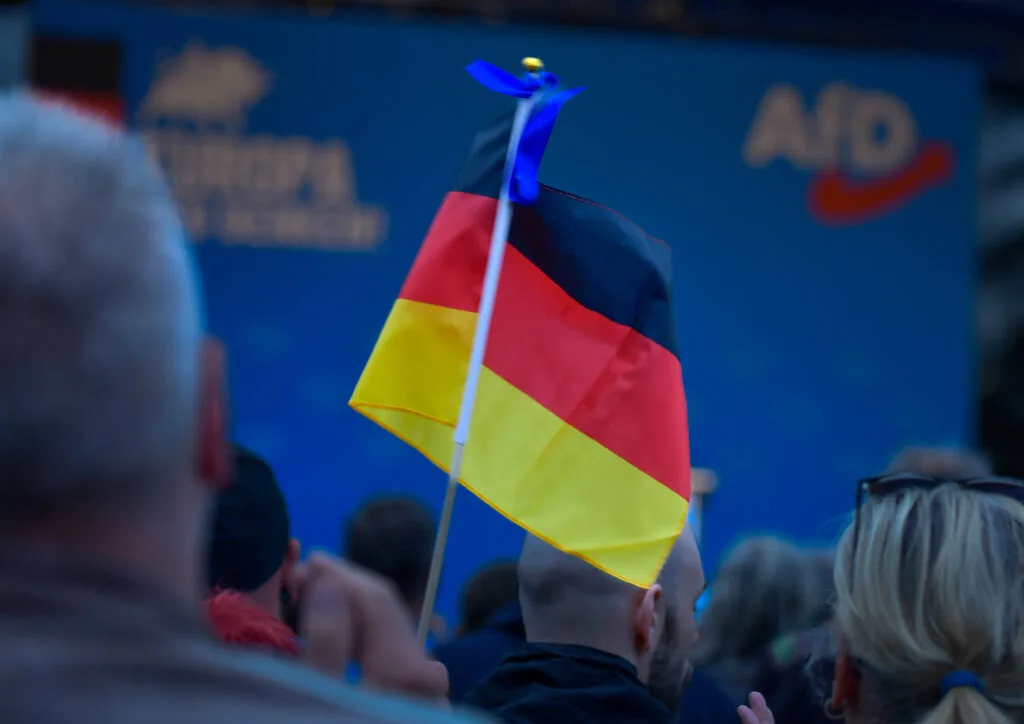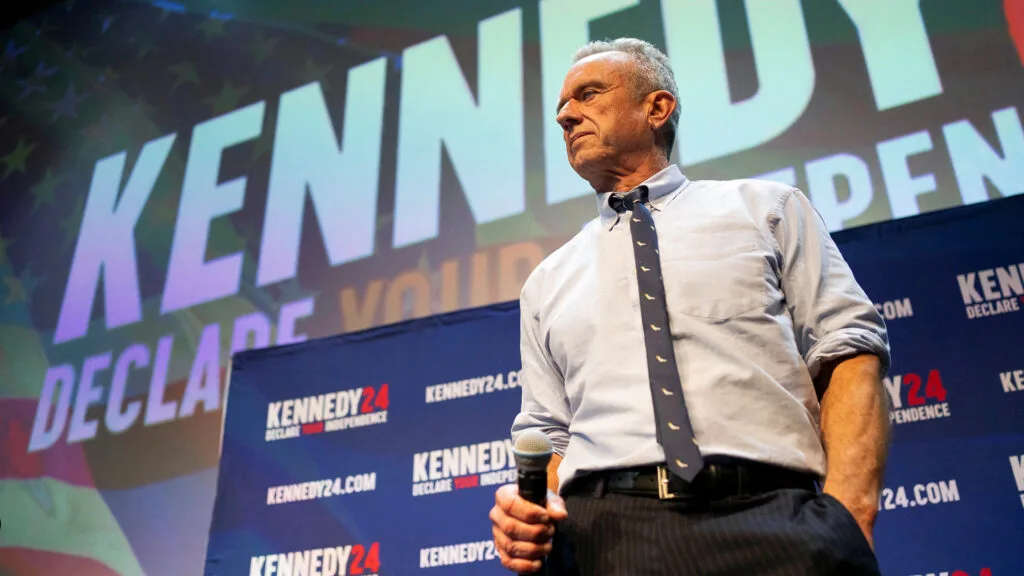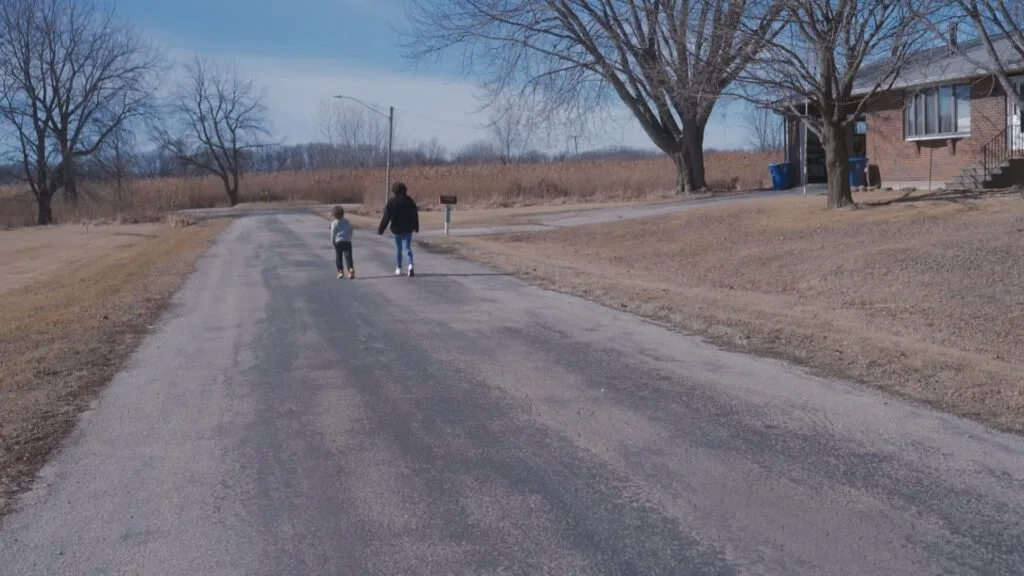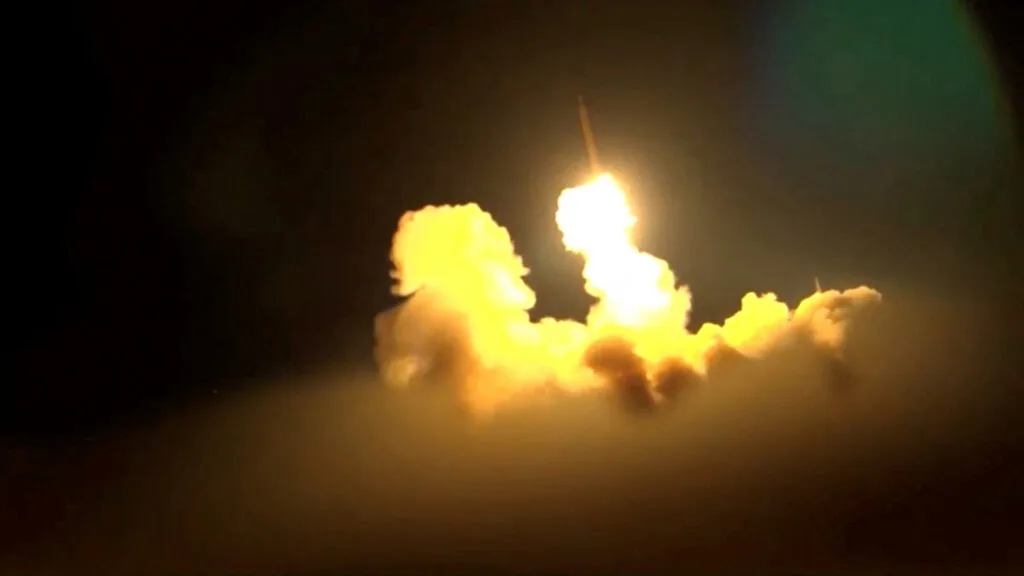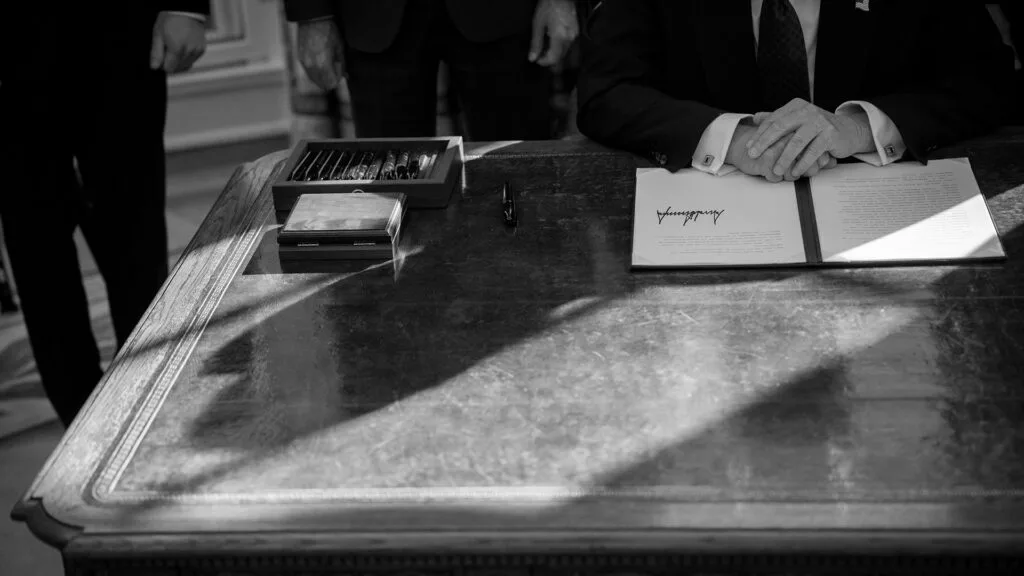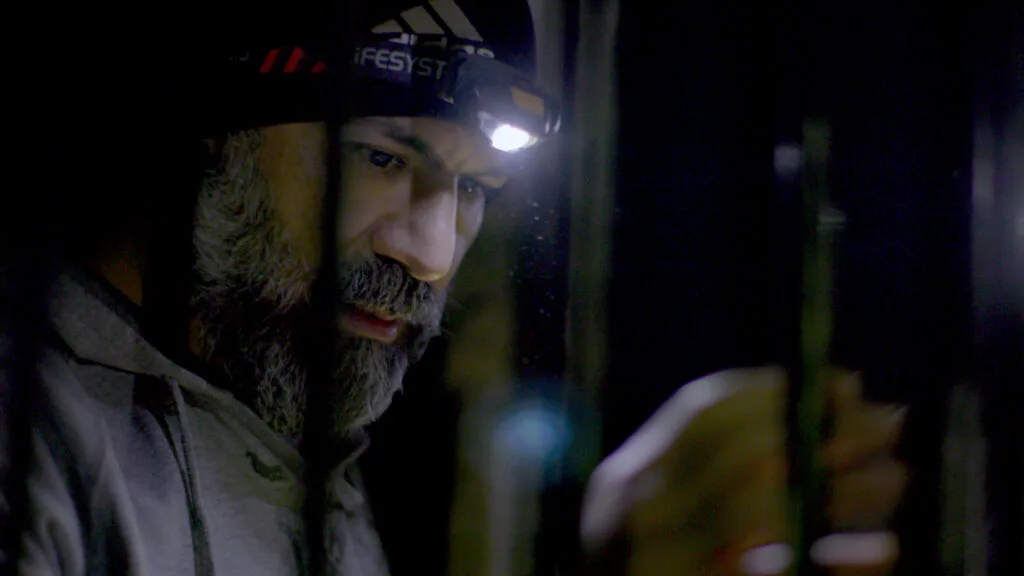‘2000 Meters to Andriivka’ Filmmaker on Filming While ‘Death Is Walking Around You’
Oscar-winning filmmaker Mstyslav Chernov discusses his decision to focus on the fight for Andriivka, a small village in Ukraine, and what he learned about human nature in the trenches.
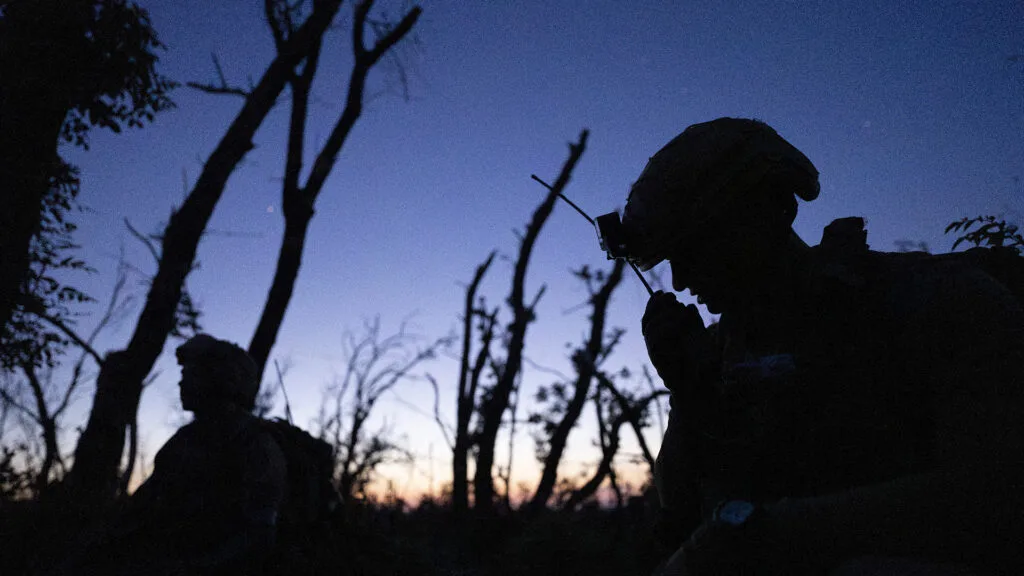
November 25, 2025
Share
The small village of Andriivka is located about 6 miles south of the Ukrainian city of Bakhmut, which was captured by Russia in May 2023 after nearly a year of brutal fighting and remains a strong symbol for Ukrainians. When Ukraine launched a counteroffensive in June 2023 to retake Bakhmut, part of it led through a little forest — just over a mile long and flanked by minefields — to the village of Andriivka.
2000 Meters to Andriivka, a new documentary from FRONTLINE and The Associated Press and the Oscar-winning team behind 20 Days in Mariupol, follows a Ukrainian brigade as they cross the heavily fortified forest with a mission to liberate Andriivka. With extensive footage captured by helmet cameras worn by the soldiers, the film offers a visceral first-person experience of the battlefield. Filmed by Mstyslav Chernov and Alex Babenko and produced by Chernov, Michelle Mizner and Raney Aronson-Rath, the documentary also intertwines moments of reflection and conversation, piecing together an intimate look at life for soldiers who volunteered to fight on Ukraine’s front lines.
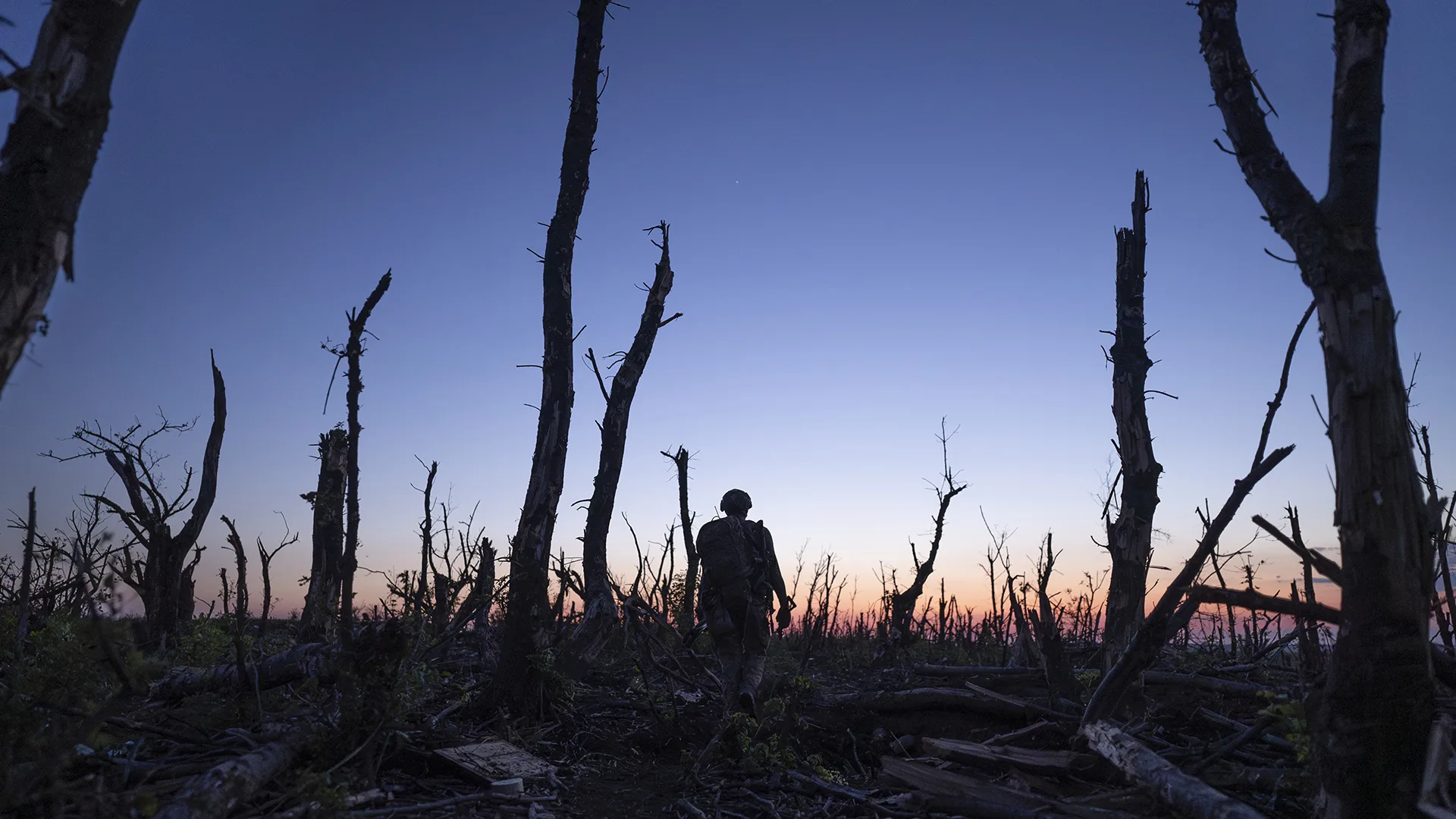
In conversation with FRONTLINE, director Chernov discussed his decision to focus on the fight for Andriivka, what helmet camera footage added to the documentary, and what he learned about human nature in the trenches.
This interview has been edited for clarity and length.
When did you begin filming this documentary?
We were presenting 20 Days in Mariupol in the summer of 2023 in the U.S. and in Europe. We were screening for big audiences. We had red carpets, conversations with critics, and at the same time, I would go back — fly to Poland, cross the border, get a train, get a car, and jump in a trench and immerse myself in that world of the trench warfare, together with Alex Babenko, my co-producer and a friend, on the second camera. And we would shoot the counteroffensive that Ukraine was launching all across the front line for weeks. And then I would go back and attend more screenings, more red carpets and then again fly back to Ukraine. So that was my world.
How did you realize the form it would take?
In 20 Days in Mariupol, we were making a film about how Ukrainians lose their homes, how Ukrainians lose their families, and children, and friends. I was so devastated by that story as we were presenting it to the world, that I was looking for a perspective of a reverse direction: when the same people who lost everything, they fight back. They take agency and they take their homes back. They take their memories back.
2000 Meters to Andriivka is a film that has at its core an idea of the importance of realism. When we invite the audience to the war zone, when we invite them to places like trenches — which sometimes feels like being on another planet — we want them not just to watch it, we want them to feel it. We want them to have an experience of it and be as close as possible to our protagonists, to the people who are right now on the front line.
"I was looking for a perspective of a reverse direction: when the same people who lost everything, they fight back."
The entire film is in that one forest, and you feel that these are the walls of their world.
I just really wanted that distance that was really short for me to become very short for the audience — that little forest that’s squeezed between two minefields where the entirety of the film is happening — just one mile. But that’s the entire life for a lot of these people, and for me too. And so I wanted distance between that little forest and the village of Andriivka, and U.S. and Europe to be shorter. I wanted people to see that it’s so much closer than they think.
You’ve mentioned it’s a small village. There were strategic elements to this forest and its importance in the war, but for you, why was it important to focus the film here?
At that point, the entire front line was a strategic target because everybody understood that this probably will be the last chance before the peace negotiations start to return at least some of the Ukrainian land, some of these cities. And that village was a doorway to liberate Bakhmut; the city was occupied in spring 2023 and by itself it was a big symbol for Ukraine.
When I met Fedya and his unit and other officers that told me about this military operation, I realized that if we would be able to tell that story in full, then it would be enough to just give the audience an understanding of what this war is really like.
How did you end up meeting Fedya?
First, we watched the battlefield from headquarters and through the screens. So actually, the first time we saw Fedya was through the screen and as they ran through the battlefield, we heard his voice all the time in the headphones and on the radio. And then after the battle, they came back to the place where they were based and where they slept near the front line and we went to meet them.
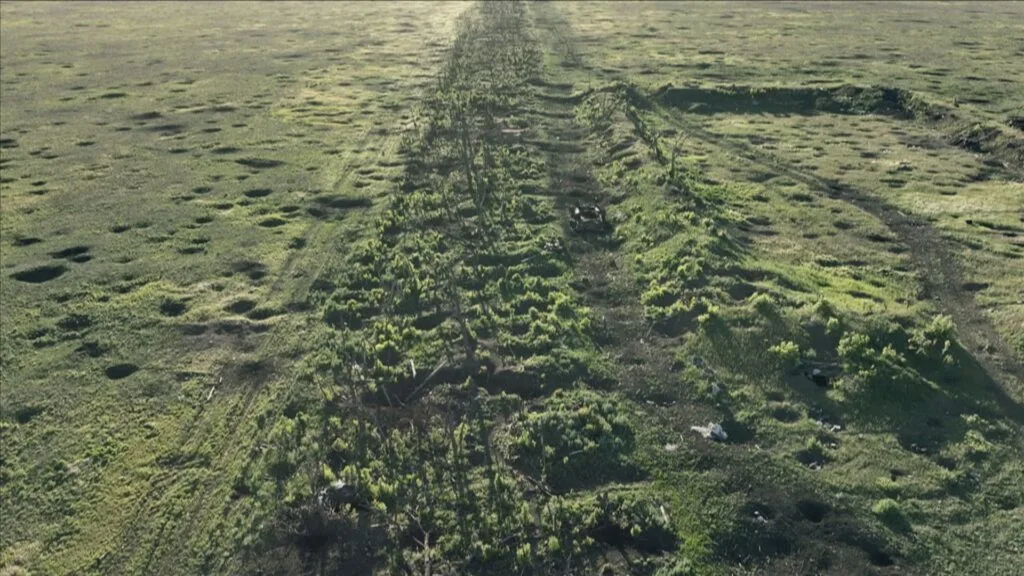
Then, we spent some time sitting and talking and just reflecting on their feelings without a recording, and then we asked if we can follow them on a battlefield and then we did.
Becoming friends in that environment is something that is very natural when you spend some time under the bombs, under the drones throwing grenades down on you, under machine gun fire. It takes little time to really connect with people because death is walking around you everywhere.
Let’s talk about the helmet camera footage. The helmet camera is an individual soldier’s point of view, and you follow them for a long time through that perspective. It’s an unusual choice and I would love to hear about your decision to use as much of it as you did.
As immersive as that footage is for the audience, as special as it is, it is in many ways dissociating. If you watch the battlefield — it’s counterintuitive — you think that if you see something through someone’s eyes, you would connect with the person through whose eyes you’re watching. But that’s actually not the case.
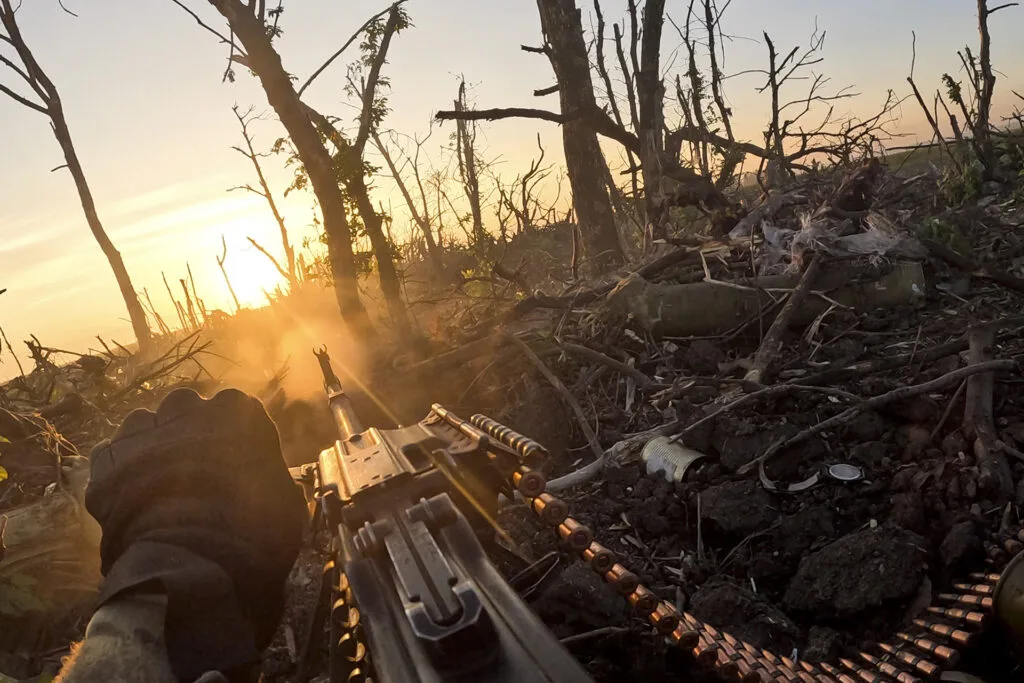
So, we realized that it is very important to find faces, to find conversations, to find stories that would be shown in between the intensive battle scenes and would allow the audience to see past the uniform into someone who is a student, who is a truck driver, who’s a policeman or a warehouse worker. Someone who thinks about when he comes back home, he needs to fix his toilet and quit smoking, someone who argues with me about rival universities.
The way the film is constructed and paced and presented to the audience is due to the amazing work of Michelle Mizner, the editor and producer, and a really good friend. She went through hundreds of hours of this footage from helmet cameras and that was not easy.
How did you get this footage?
In the beginning of summer, we’d been following more than one platoon. So we’d been already watching a lot of stuff that I filmed, that other brigades and other platoons filmed, and in the end, when we landed with the Third Assault Brigade and started following them, that’s when we focused on something that they have shot already.
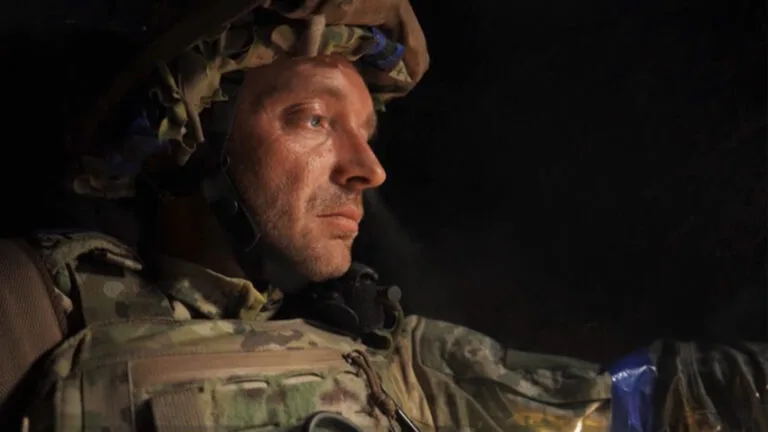
We arrived two months into this operation to liberate Andriivka, so by that time they’d already shot a lot of the material through their helmet cameras. Each unit has these helmet cameras on them and films their operations for the battlefield analysis later on, if someone gets injured — to have an understanding of how it happened and what went wrong, what went right.

And of course we needed the agreement of the families and also the brigade itself. We spent almost a year to secure all of it.
Why did you include the footage that you did include?
The way we built the film, it is based on the distance. So, we were looking for battles that were happening and being recorded around that distance that we were walking through. We were also looking for the battles that would have a story in them.
Some battles are very chaotic and you can’t really understand what’s happening, but some battles are pretty clear on where they start, what’s the goal, and how it unfolds. And they all have their own big dramas in them — someone gets missing, someone gets found, someone gets injured and is being pulled out from the battlefield and you don’t know what’s going to happen to them.
"Courage is not when you're not afraid; it's when you are afraid, but still making the choice to do what you think is right."
Also, we were looking for these moments that was a treasure for us, when one of the soldiers takes the camera from the helmet and turns it at himself so we can actually see the face of someone who is recording.
In the film, there are also these moments where soldiers let their guard down and share a human moment. There are these wrenching moments of pause on soldiers where they’re experiencing shock, or grief, or fatigue from their fighting. And even in moments where they might be injured, the camera remains an unflinching eye. I wonder if anything surprised you from spending as much time as you did with the soldiers.
I think most surprising, for me, is their irrational optimism that we see throughout the entire film. It exists in the same space as unbearable tragedies, and it tells me a lot about humans. It tells me also a lot about what true courage actually means.
True courage is knowing that you might die, knowing that a flag you’re going to set over this village that is already maybe destroyed and may be occupied again and that flag may fall again. And then, knowing that you might not walk out of that forest alive and still making a conscious choice — because everyone we see in the film are mostly volunteers. Courage is not when you’re not afraid; it’s when you are afraid, but still making the choice to do what you think is right.
Double Your Impact. Protect the Truth.
Bold journalism requires complete independence, and that is only possible with your support. All donations up to $100,000 will be matched. Your gift will go twice as far for FRONTLINE.
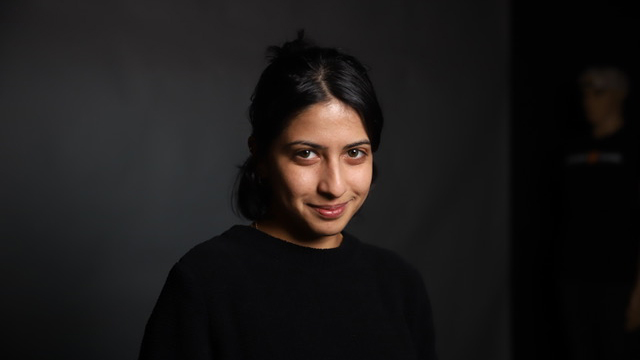
Email:
sunny_nagpaul@wgbh.orgRelated Documentaries
Latest Documentaries
Related Stories
Related Stories
Explore
Policies
Teacher Center
Funding for FRONTLINE is provided through the support of PBS viewers and by the Corporation for Public Broadcasting, with major support from Ford Foundation. Additional funding is provided the Abrams Foundation, Park Foundation, John D. and Catherine T. MacArthur Foundation, Heising-Simons Foundation, and the FRONTLINE Trust, with major support from Jon and Jo Ann Hagler on behalf of the Jon L. Hagler Foundation, and additional support from Koo and Patricia Yuen. FRONTLINE is a registered trademark of WGBH Educational Foundation. Web Site Copyright ©1995-2025 WGBH Educational Foundation. PBS is a 501(c)(3) not-for-profit organization.
